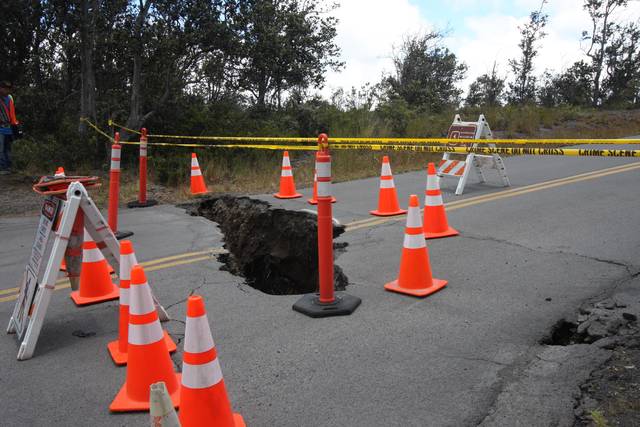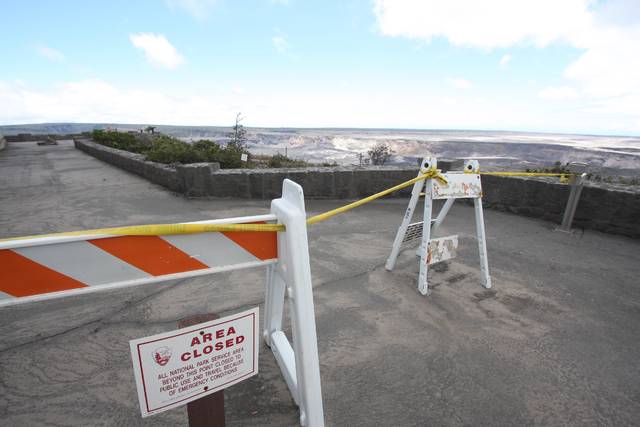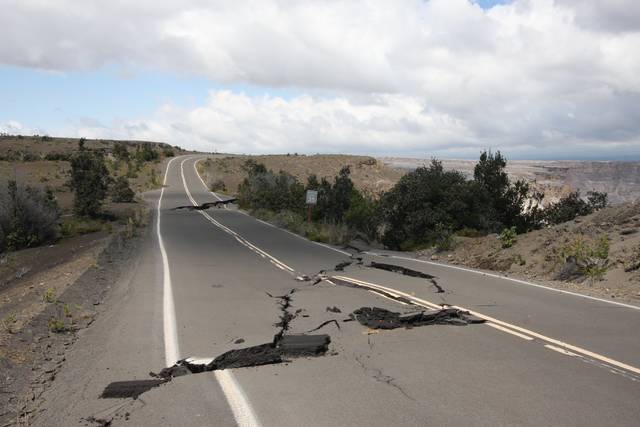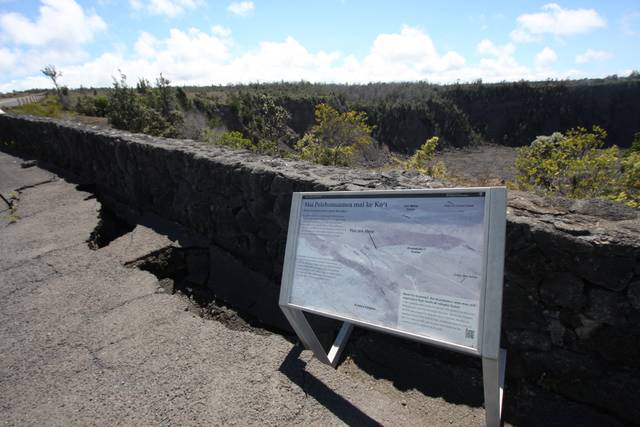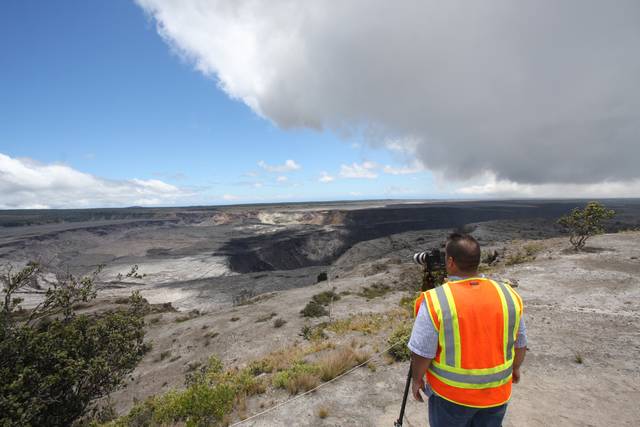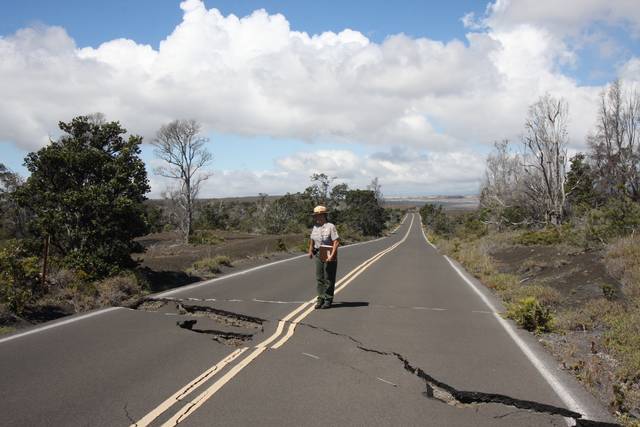Hawaii Volcanoes National Park officials expect visitors to be amazed by the changes to Kilauea’s caldera, where dozens of collapse events have quadrupled the size of Halema‘uma‘u crater and created a chasm 1,500 feet deep.
But with roads impassable due to sinkholes and cracks, and water lines broken by earthquakes during the past three months, they can’t say yet when the park will reopen.
Completing all the repairs potentially could take years, but spokeswoman Jessica Ferracane said officials are reviewing what areas could be reopened sooner than later.
“We’re not putting a timeline on it right now,” she said. “There’s still a lot of uncertainty, but we are really anxious and eager to reopen at least part of the park. It will happen in phases. It won’t happen all at once.”
Most of the park has been closed for 100 days following the start of collapse events and swarms of earthquakes that exceeded 18,000 temblors per month. Only the Kahuku Unit on the flank of Mauna Loa remains open.
The Kilauea summit has been quiet since the last collapse event Aug. 2. Reopening portions of the main park area will depend on U.S. Geological Survey giving the park confirmation that the collapse events, associated with the lower East Rift Zone eruption, are done, and damage assessments.
Ferracane said options for reopening in the short-term include Devastation Trail and Chain of Craters Road down to the coast. She said the road is passable at least for small vehicles. No decisions have been made.
“I think we have a better idea what won’t open (immediately),” she said. “And that’s going to be Jaggar (museum) and that will be Thurston Lava Tube until those full assessments can be done.”
The USGS Hawaiian Volcano Observatory lowered the alert level for the volcano from a warning to a watch Friday. While hazards are diminished, geologists say they’re not ready to call the lower East Rift Zone eruption or the collapse events, caused by the draining of magma from the summit reservoir, over.
Ferracane said there have been 68 collapse events that have swallowed portions of the caldera floor and the Overlook parking lot, which closed following the start of the 2008 summit eruption.
She said the inner part of Halema‘uma‘u is now 1.5 kilometers (about a mile) in diameter. What’s called the “outer collapse area” is 2 kilometers (1.24 miles) by 3 kilometers (1.86 miles) wide.
The caving of crater walls exposed geology hidden underneath, including rock stained by sulfur deposits.
“It’s almost as if we have our own Grand Canyon now,” Ferracane said, referring to the size of the crater.
When parts of the park reopen, there might not be running water due to damage to the water system. Currently, water is only available at the visitor emergency operations center.
“That will be a key point for reopening — can we provide water for visitors?” Ferracane said. “Will they be able to use flush toilets or will it be a very rustic experience?”
Cindy Orlando, park superintendent, said at a talk story session Thursday in Pahoa that repairs to the water system could cost $40 million.
In order to connect with more people, Ben Hayes, chief of interpretation, said the park will crowd fund a “mobile visitors center” to travel the island while the park is partially closed.
Orlando said it would be crowd-funded because the eruption has made it harder for the park to secure federal dollars.
She noted the “federal government is skeptical right now in investing in a park situated on an active volcano.”
Kyle Anderson, a USGS geophysicist, said what caused the lower East Rift Zone eruption to pause remains a matter of debate. The eruption substantially subsided two weeks ago, and lava is no longer flowing out of fissure 8 in Leilani Estates.
It’s also not known how much magma remains in the summit reservoir.
He said about 0.8 of a cubic kilometer of magma is thought to have erupted on the rift zone since May 3. Estimates for the size of the reservoir range from 1 cubic kilometer to 10 cubic kilometers.
“If you think that Halema‘uma‘u had 1 cubic kilometer — that’s a lot of it,” Anderson said. The eruption has destroyed more than 700 homes.
It remains to be seen if the eruption will resume at the lower East Rift Zone eruption, move to the middle East Rift Zone, or if lava’s next appearance will eventually be at the summit, he said.
Either way, Anderson said there’s no sign that the rate of magma being supplied to Kilauea has changed.
Email Tom Callis at tcallis@hawaiitribune-herald.com.
Email Michael Brestovansky at mbrestovansky@hawaiitribune-herald.com.







